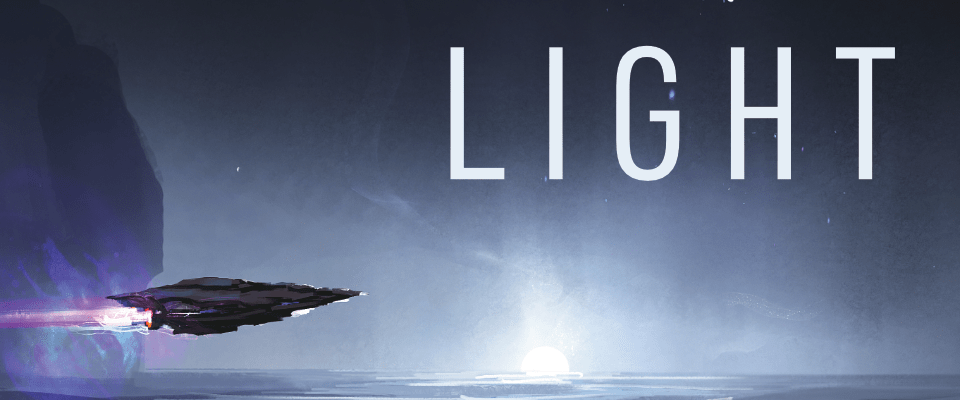LUMEN, developed by Spencer Campbell of Gila RPGs, is a rules framework for action TTRPGs that’s inspired a veritable horde of games based on its core system. Well, strictly speaking, LIGHT was the first game, and the SRD came later, but you get what I mean. Its combination of fast-play action and easy-to-spin system make it a really fantastic convention game, and I thought I’d put down some tips for making sure a one-shot really hits the right buttons.
While you’re reading this, I should tell you about my Patreon. Patrons get access to content 7 days before they hit this site, the chance to request articles or content, and the chance to play in one-shot games, for a very reasonable backer level of £2 per month. If you like what you read, want to support the blog, and have the funds for it, please consider supporting here. Telling people about the blog, and sharing links/retweeting is much appreciated also – thanks!
I ran Gunfucks at North Star recently, and am planning on running LIGHT and Deathless soon. Gunfucks is a Borderlands-riffed shooter-looter (I’ll share my prep notes in the next post), while LIGHT feels sort-of-Destiny, and Deathless is a Highlander-style immortal warrior battles game. If all of these seem high-action and pretty frenetic, that’s the sort of play that LUMEN leans towards – and it’s useful in general to think of them emulating video games as their source material, as you’ll see later.
It’s All About the Fights

LUMEN isn’t quite a game with a combat system and nothing else (and that’s not a dig – I’m a huge fan of Sentinel Comics, Marvel Heroic, and even Feng Shui 2 that largely subsist on set piece action scenes) – but it is built towards big, powerful heroes fighting set piece battles, and most of the rules support this.
With this in mind, fight scenes with some attention and planning made to them pay off well. Make sure that your fights take place in Dangerous Places – so the battlefield has lots of things to interact with that either side can turn to their advantage. It’s also worth thinking of fights in terms of goals and victory conditions, rather than everyone fighting to the death.
Because the resolution mechanic is relatively simple, encourage and model your players to describe their actions cinematically – because success criteria (the highest dice rolled) is out in the open, they should be able to follow the start description -> roll dice -> describe success or failure pretty smoothly.
Gunfucks has a cool idea (which I’ll be stealing for other games) where in the GM’s turn there’s a battlefield shift – something changes each turn to make the fight interesting. Easy ways to do this in LUMEN games is to shift some range bands, or introduce some more hazards. It can also move some enemies or call in reinforcements – which you might need, as balancing combat isn’t as straightforward as you might think.
It’s Not All About the Fights

It’s easy to think that LUMEN games don’t really have a system for skill checks – but they absolutely do, with the Approaches rolls functioning just as well for investigative or social conflict. A simple skill challenge where the party need to get a total of 5 successes across the rolls will work fine, with them taking consequences for each 1-4 roll.
But, as combat can be pretty frenetic with dice-rolling and power-checking, it works just as well to have interludes between fights that are just free roleplaying. This will add depth to the game, and by prepping some interesting NPCs with conflicting goals (a good approach is the 7-3-1 method) you can have some good scenery-chewing interludes. In play, LUMEN often feels like a video game – and these are the cut scenes that provide a break from the relentless shooting and fighting.
In all of these games, PCs are high-powered badasses, so don’t be afraid to make the stakes big – the safety or otherwise of a country or a planet could rest on their shoulders. Enemies, likewise, should be dangerous, and give them plans and motivations the players can riff off. A pre-game relationship building exercise where you work out bonds between the PCs would help in a one-shot to encourage inter-PC dialogue, even if it’s a simple one like this.
Practicalities
There’s a few practical tips at the table that can help prep and delivery. For starters, you can afford to really throw enemies at your players. For games with 5 or 6 players, you can be prepared to give lots of low-level enemies for them to defeat before they can get to the big bad, or you risk fights being over very quickly. As long as your mooks only do 1 or 2 Harm you’ll be fine – quite a few of the classes can resist 1 Harm anyway, and if they’ve got 1 Health they’ll go down in one hit anyway.
Many LUMEN games have both Health and some sort of power resource – in Gunfucks its Bullets, for instance. Having counters to represent this really helps at the table – I favour poker chips for health, as it’s pretty visible in one stack to you and the other players how much the other PCs have left.
I touched on it earlier, but these games also really benefit from getting PC narration in. They’re not just rules-light but very setting-light as well – a lot of depth will come from the table, and 5-6 imaginations are better than one for this. So use the techniques here to help develop player narration and give the setting – and scenes – some depth.
Have you played or run any LUMEN games? Any recommendations for what I should try next? Let me know in the comments.
> “Gunfucks has a cool idea (which I’ll be stealing for other games) where in the GM’s turn there’s a battlefield shift – something changes each turn to make the fight interesting. ”
I love this idea so much! It’s the sort of thing that on-paper seems so simple, but adds a ton of texture to a game when you think about it.
In addition to the ideas above, as we’re talking about a system designed to emulate the styles of play seen in video games, I’d also suggest Villainous Monologues (that reveal an unwelcome truth!), or the monster unveiling the ‘second stage’ of its battle (as seen in so many video games!)!
LikeLike
[…] blogged before about running LUMEN system games, but as this uses the almost totally different LUMEN 2.0 system, that post is pretty irrelevant to […]
LikeLike